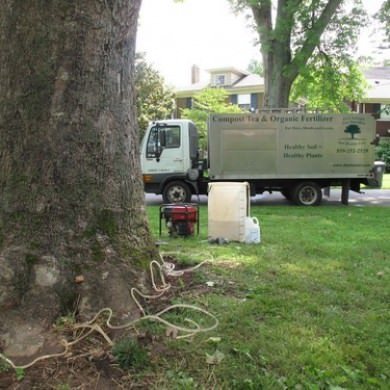Insect and Disease Pests
This page covers several of the common insect and disease tree pests of the Lexington Kentucky area. Please note that not every insect or disease is a health threat to your plant, and a site visit by one of our ISA Certified Arborists is the best way to diagnose your trees, determine the likely health impact, and prescribe treatment if necessary.
Common diseases that impact the health of landscape trees in Central Kentucky:
Ganoderma Root Rot and Inonotus Root Rot are two pathogenic root and butt rot diseases that are common among urban oak trees in the Lexington, KY area and cause trees to become unstable and prone to failure. Fungal conks are often visible at a tree's base and upon diagnonis, often leads to the tree being deemed a hazard.
Bacterial Leaf Scorch is a common systemic bacterial disease that attacks Pin Oak, Red oak, and American Sycamore (among other species) in the Central Kentucky area. This disease causes early defoliation, dieback and eventually death of infected trees. Early diagnosis may allow for treatment and extended tree life.
Rhizosphaera Needle Cast is a fungal needle disease that commonly attacks Blue Spruce in the Lexington, KY area. It causes dieback starting in the bottom canopy of the tree and works it's way up the tree, leading to tree death. Early diagnosis can allow for a tree to be successfully treated with foliar sprays to guard against re-infection. We also recommend proper sanitation of fallen needles from around the tree to help guard against re-infection.
Anthracnose and leaf spot diseases are fungal and affect many different species of trees such as dogwood, sycamore, maple, ash, and crabapple. Fungal leaf diseases infect trees during the spring when the leaf buds are breaking and leaves are enlarging, but become visible to the eye later in the season. Browning and curling leaves will drop early, and may cause tree stress if occurring in multiple or consecutive years. Often, disease treatment is not required, however proactive health measures (such as deep root organic fertilization) should be considered to maintain tree health and vigor.
Dutch Elm Disease is a vascular wilt that is carried by elm bark beetles and is transferred from plant to plant through root grafts often leading to dieback and eventually death.
Trunk and Stem Cankers cause tissue death and wounding of a large variety of trees caused by fungal or bacterial pathogens and lead to branch and tree decline. Common cankers such as Phompsis Canker, Nectria Canker, and Cytospora Canker are ailments common on trees stressed by drought, construction damage, root loss, or other environmental stresses. Canker diseases frequently kill branches or structurally weaken a plant until the infected area breaks free, often in a wind or ice storm.
Verticillium Wilt is a soil-borne fungus that causes a vascular wilt most commonly in Sugar Maple, Norway Maple, Red Maple, and other woody specimens. Verticillium Wilt causes branch and tree decline and eventual death. Because the fungas remains in the soil, non-susceptible tree species should be planted as replacements.
Thousand Cankers Disease (TCD) poses a serious threat to the health of the black walnut tree. TCD is not currently found in the Lexington, KY area.
These insect pests are commonly found in the Lexington, KY area:
Scale Insects come in many different sizes and shapes and are often difficult to identify by untrained eyes. These pests multiply very quickly and suck the life out of trees and landscape plants once infested. Plants infested with scale insects often turn a black-ish color and may attract flies, wasps, and other flying insects. Prolonged infestation can lead to tree decline or death. Control methods vary based on the specific type of scale and the host plant. Some types of scale have very specific treatment windows, others are notably difficult to control and require multiple treatments.
Pine Sawfly are caterpillar looking pests that can defoliate White Pine trees in a matter of days or weeks. When diagnosed in time, pine trees can effectively be treated and preserved.
Pine Bark Beetle and Elm Bark Beetle are tiny beetles that bore under the bark of pine trees or elm trees and kill the tree. These pests are usually pretty random, so preventative treatment is generally reserved to the important specimen trees.
Japanese Beetles invade popular trees such as Lindens and cherries and defoliate them within a few weeks' time. New treatment formulations on the market allow for effective control of Japanese beetles with no negative effects on mammals or other beneficial insects such as bees.
Boxwood shrub pests. commonly affect this shrub which is a favorite in Lexington landscapes - Boxwood Leafminers, Boxwood psyllids, and mites. All three pests affect the health and beauty of your boxwoods and we can effectively control them with an annual treatment.
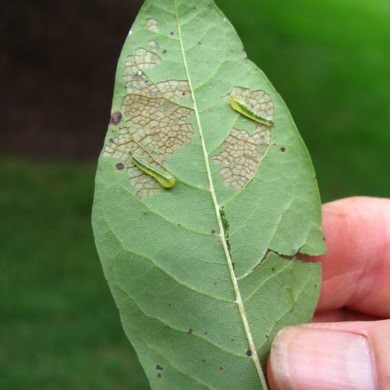
Inchworms with Leaf Feeding Damage
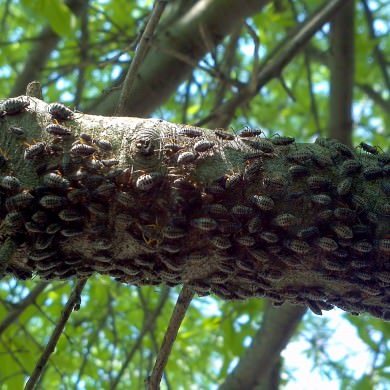
Bark Lice
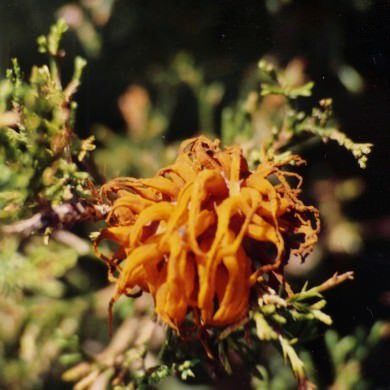
Cedar Hawthorn Rust
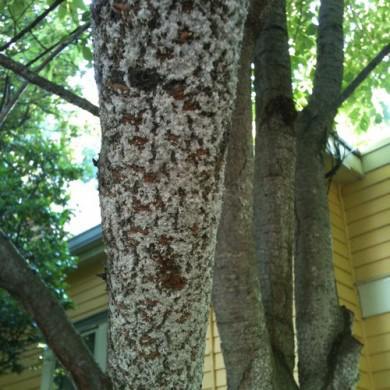
Cottony Aphids on Cherry Tree
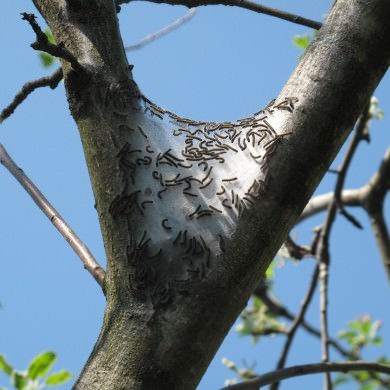
Eastern tent Catepiller
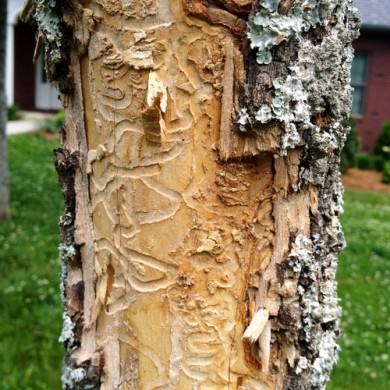
Emerald Ash Borer Eab
